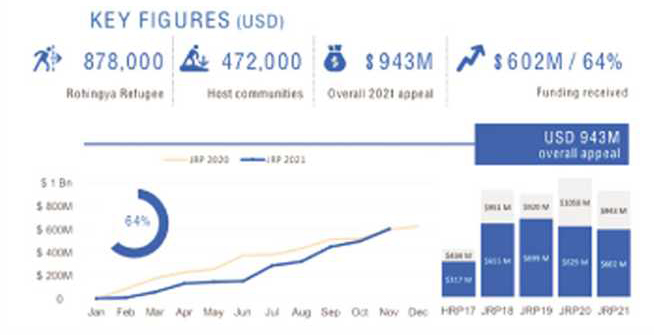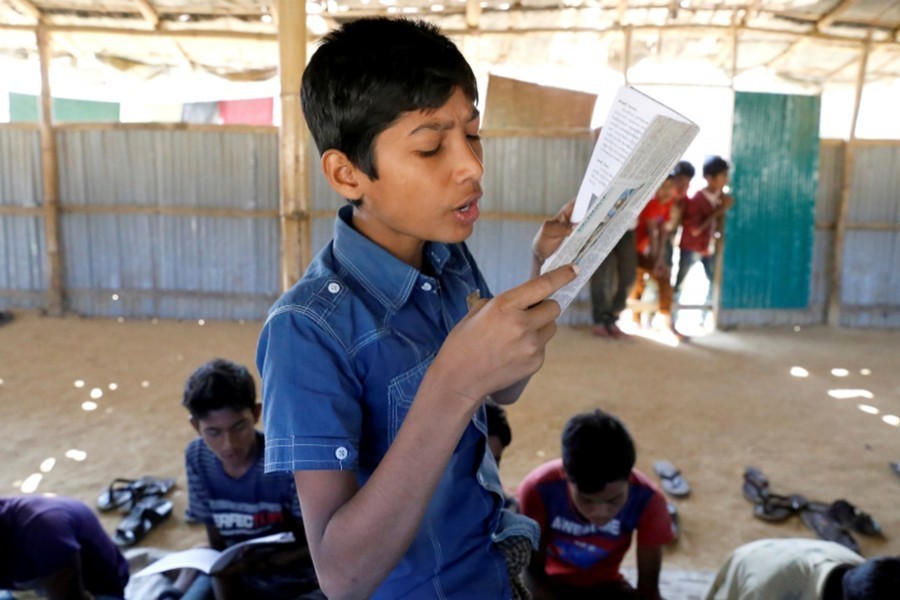Funding for the humanitarian needs of the Rohingya under the Joint Response Plan 2021 was US$ 602 million, which is 64 per cent of the total requirement of US$ 943 million.
Education and logistics were the most neglected sectors as funding for these two sectors were 5.0 per cent and 0 per cent respectively, said a report released by the Inter Service Coordination Group (ISCG), a platform of the international humanitarian agencies engaged in providing humanitarian assistance to the Rohingya in Bangladesh.
The Joint Response Plan sought $85 million for the education of the Rohingya and 1.5 million for logistics; but the education sector received a fund of $4.5 million while not a single penny was provided for the logistics.
On the other hand, $3.0 million was provided for communication with communities, $4.5 million for health of the staff of the agencies, and $1.0 million for emergency telecommunications.

The highest funded sector is food security, which got $156.7 million against the requirement of $247 million.
For protection, $48 million was provided against the target of $92 million.
In the last two years, the funding under the Joint Response Plan was $699 million and $629 million, respectively, against the requirement of $920 million and $1,058 million.
The Response Plan is an estimated funding requirement announced by the humanitarian agencies for the refugees against which different countries across the world provide money to support the expenditure for the humanitarian needs.
Among the countries, the USA is the top donor to the Joint Response Plan 2021 as it provided $76.8 million, followed by Australia with $0.3 million and the UK with $35.1 million.
Among the agencies, the top fund provider is the World Food Programme, which gave $198.3 million for the 2021 Response Plan.
The second-biggest donor is the UNHCR providing $137.1 million, followed by International Organisation for Migration (IOM) which gave $98.4 million.
Since the onset of the crisis in August 2017, donors have contributed over $2.9 billion to successive response plans, amounting to 67 per cent of total financial requirement.
The humanitarian operations include 889,704 refugees who are living in camps in Ukhiya and Teknaf upazilas under Cox's Bazar district. Children make up 52 per cent of the refugee population.
There are a total of 34 camps where the refugees reside, and most are hilly and rugged.
There was an initial allocation of 2,000 acres of protected forest land by the government, which has since become the Kutupalong-Balukhali expansion site, recognised as the largest refugee camp in the world.


